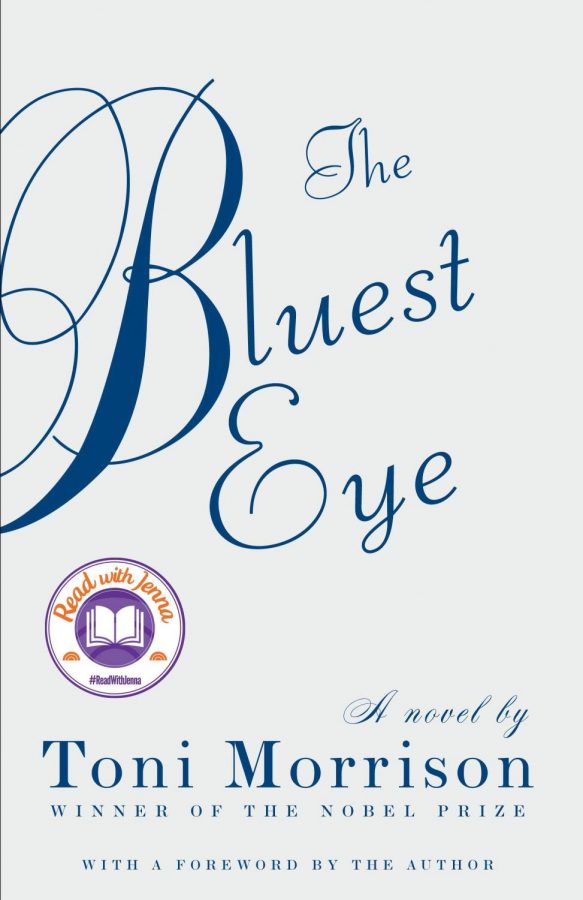All eyes on the fight over Toni Morrison’s novel
Renewed controversy over the district’s curriculum choices have been a common discussion at Westfield BOE meetings recently.
Over the past few weeks, Toni Morrison’s novel The Bluest Eye has been trending in the news. Parents from all over the nation are demanding that their school boards ban the book from the curriculum, with WHS parents joining the movement last week and voicing their frustrations.
The book is currently assigned to 16 and 17-year-olds as part of the WHS English and American Studies curricula. Set in 1941, the novel tells the story of a young African American girl named Pecola and explores the struggles she and her family endure as African-Americans in a predominantly white town. Coming from an abusive home, Pecola faces cruelty from her parents and is raped by her father.
The Bluest Eye has repeatedly been featured on the American Library Association’s (ALA) Top 10 Most Challenged Books list, once again making the list in 2020. Numerous other books incorporated into WHS’ curriculum have also been challenged on the ALA’s list including, The Absolutely True Diary of a Part-Time Indian, To Kill a Mockingbird and The Kite Runner.
Many of the texts that students of all grade levels read in class contain difficult moments and profane dialogue. “[The Bluest Eye is] a book that is not afraid to look at some of the ugly truths that happen to people. And in that sense, it’s not really any different than any other texts that we teach,” said English Teacher Aimee Burgoyne.
At a recent BOE meeting on Nov. 16, parents were vocal about the graphic scenes and explicit language showcased in The Bluest Eye, citing several excerpts from the text. One parent said, “I don’t have a problem with it being spoken about, but to detail how a man feels when he is raping his daughter is not appropriate for children.”
Many other parents read similar excerpts that portrayed elements of this imagery. In addition to the vivid description, the book also examines the hardships of slavery. Like most things, it is important to read the text in its entirety to get the full picture. District English Language Arts Supervisor Elizabeth Reilly said, “passages from this book [that are] taken out of context most certainly can be disturbing.”
WHS students believe The Bluest Eye presents an authentic view of racism and abuse. “As we finished the book, [Morrison] stated in an interview that she wrote this because there was no book like this for her to read,” said WHS senior Grace Raber.
Additionally, at the BOE meeting, parents stated that they wished the school board was more transparent with their course material. One resident said, “The school district should consider giving parents a heads up when controversial material like this is planned.”
English Teacher Merit O’Hare has carefully considered the text and has taught it in past years to her seniors. She said, “We do our best to anticipate student needs and reactions and to address them by providing context, supplemental resources, and opportunities for discussion. We care deeply about our students — and this includes preparing them to participate in a complicated, demanding and multifaceted society.”
Another WHS senior, Zach Gerstel, who recently read The Bluest Eye, agrees that “[it] makes some people feel uncomfortable, but it’s important to remember the book is fiction and does not endorse the terrible things that happened.”
Though The Bluest Eye was published in 1970, many of the issues discussed are still prevalent in society today. While not all readers can relate to the abuse described in the novel, domestic violence, abuse and racism still affect many individuals.
At its core, certain themes discussed in The Bluest Eye are also relevant to specific course curriculum. Burgoyne has taught The Bluest Eye in her 11th grade English classes. “It fits well with the junior courses because it talks about issues related to race, class and gender in American society.”
Now that complaints have been lodged regarding this text specifically, the Curriculum, Instruction and Programs Committee is in the process of making an informed decision on the standing of the book.
Speaking on behalf of the committee and their task to determine the best course of action, Superintendent Dr. Raymond González said, “When diversity of perspectives and experiences exist on a topic, there is no single answer that may meet everyone’s needs.”
Similarly, the book Our Skin was debated earlier in the year. Upon review, the district decided it should be kept in the curriculum as a resource to teach children about diversity within an approved context of a lesson.
Above all, Reilly stated that, “it is important to note that the Westfield English Department has a long standing tradition of providing its students with an excellent education and educating them to be citizens in a diverse world. If you go back to the mission statement of both the district and the high school, the district message statement ends with ‘productive, well-balanced and responsible citizens who respect individual differences and diversity in an ever-changing world.’”

